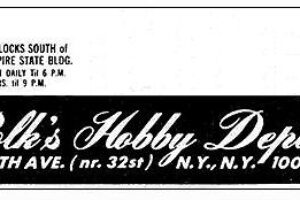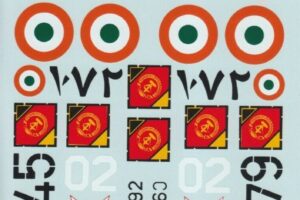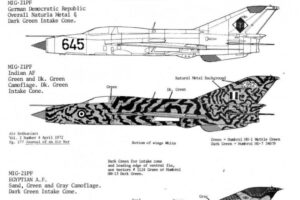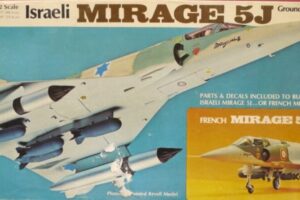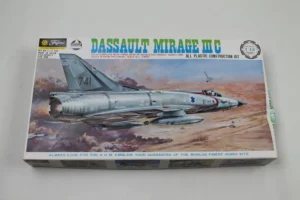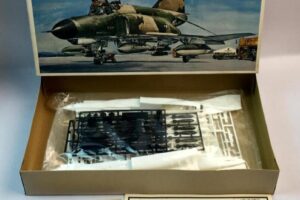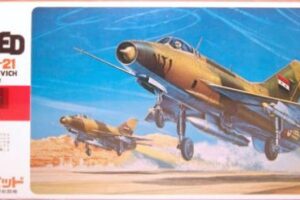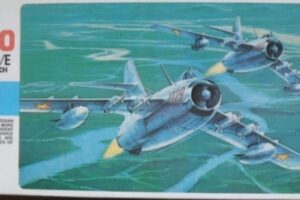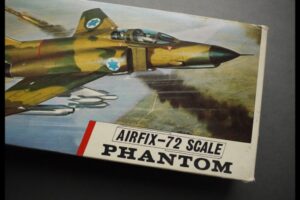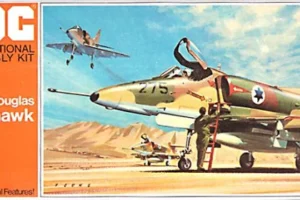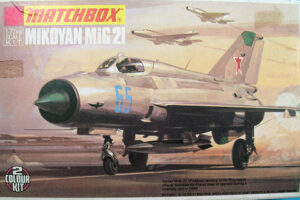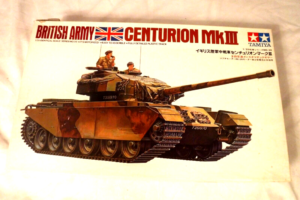1970s Models of the Mideast Conflict
With the 50th anniversary of the Yom Kippur War, it’s worth a look back to see what the hobby offered around that time for modelers interested in replicating the conflict for their display shelves. In terms of military equipment, the Yom Kippur War was a showdown between U.S. and Soviet war machines and a number of these were available in kit form. But scale modeling in the 1970s was very much a case of the box art looking better than the kit, so no matter the subject, a modeler had his work cut out for him when he started cutting sprue.
In that era, the hobby was taking its first steps from toy towards replica and despite a growing number of adult enthusiasts, manufacturers still focused on younger modelers. So often a model was engineered with simplicity in mind with details and accuracy taking a back seat to ease of construction. Most kits from that era were just basic shapes, consisting of airframe parts, landing gear, a few missiles or bombs and a rudimentary cockpit seat and pilot; it was up to the modeler to turn that into a representation of the real thing. Quite a bit of work was involved, with sanding, puttying, shimming, carving and accurizing taking up most of a modeler’s time. Aftermarket resin parts and photoetch were nonexistent with the only extras a modeler could expect to find being Microscale decal sheets. Most of all, in those pre-internet days, a modeler was dependent on his local hobby shop or a few mail-order outlets, like Squadron or Polk’s Hobby Department Store in New York City, for an up-to-date selection of kits.
Aircraft
In the early-to-mid 1970s, when a modeler thought of 1/32 scale, he thought of Revell, which had pioneered a line of 1/32 aircraft kits starting in the 1960s. The Revell 1/32 kits available then that could depict a plane from the Mideast conflict were the F-4E Phantom II and the MiG-21PF, with the Mirage 5J showing up a few years later. The surprise here is, if you want a 1/32 MiG-21PF today, the old Revell kit is still the only game in town. Fortunately, there were even some Microscale decal sheets available for these kits, which included Israeli and Egyptian markings.
1/48 scale? Still something of an oddball scale back then, with most quarter-scale kits being from the original “bluebox” Monogram series of WWII planes. But Fujimi had three decent 1/48 (or were they 1/50?) kits that fit the Mideast War theme- the Mirage IIIC, A-4 Skyhawk and F-4E Phantom II.
1/72 scale was king, and the greatest variety of Mideast War airplane kits in that scale were from Airfix, Frog, Hasegawa and Matchbox. About the best that could be said about these kits was that they were affordable and available at almost any hobby shop.
Armor
If you were an armor modeler in the early-to-mid 1970s and wanted to build a 1/35 Yom Kippur War subject, you could have any brand you wanted as long as it was Tamiya. These models sort of looked like the real thing, although motorization had taken priority over accuracy and you had to live with rubber-band tracks and odd dimensions. In that era, about the only references available, especially for Soviet subjects, were blurry photos in news magazines. And come to think of it, those were probably the references Tamiya used as well.
Best of Show
The most popular Mideast War model kit back then, and one that was contemporaneous with the 1973 war, was the Airfix 1/72 SAM-2 missile, truck and launcher. The real thing was used in great numbers by Arab forces during the Yom Kippur War and took a toll of Israeli aircraft, so it was frequently mentioned in news reports. Of all the models from that era, this is the one that most fits the conflict and the one I would most want to build today, but unfortunately it is one of the few Airfix molds that was lost or damaged beyond repair and the kit has not been reissued since the mid-1970s. They still can be found on eBay, but expect to pay collector’s prices for a dime-store kit molded 50 years ago.
Even if you don’t care to go down the Golden Age nostalgia route, give some thought to building a kit depicting a subject from the October 1973 war, a conflict that can focus the attention of modelers today as much as it did a half-century ago. Thankfully for all of us, it was the last conventional state vs. state conflict between Israel and the Arab nations, and unlike 1973, no one has to worry about oil embargoes driving up the price of plastic.
